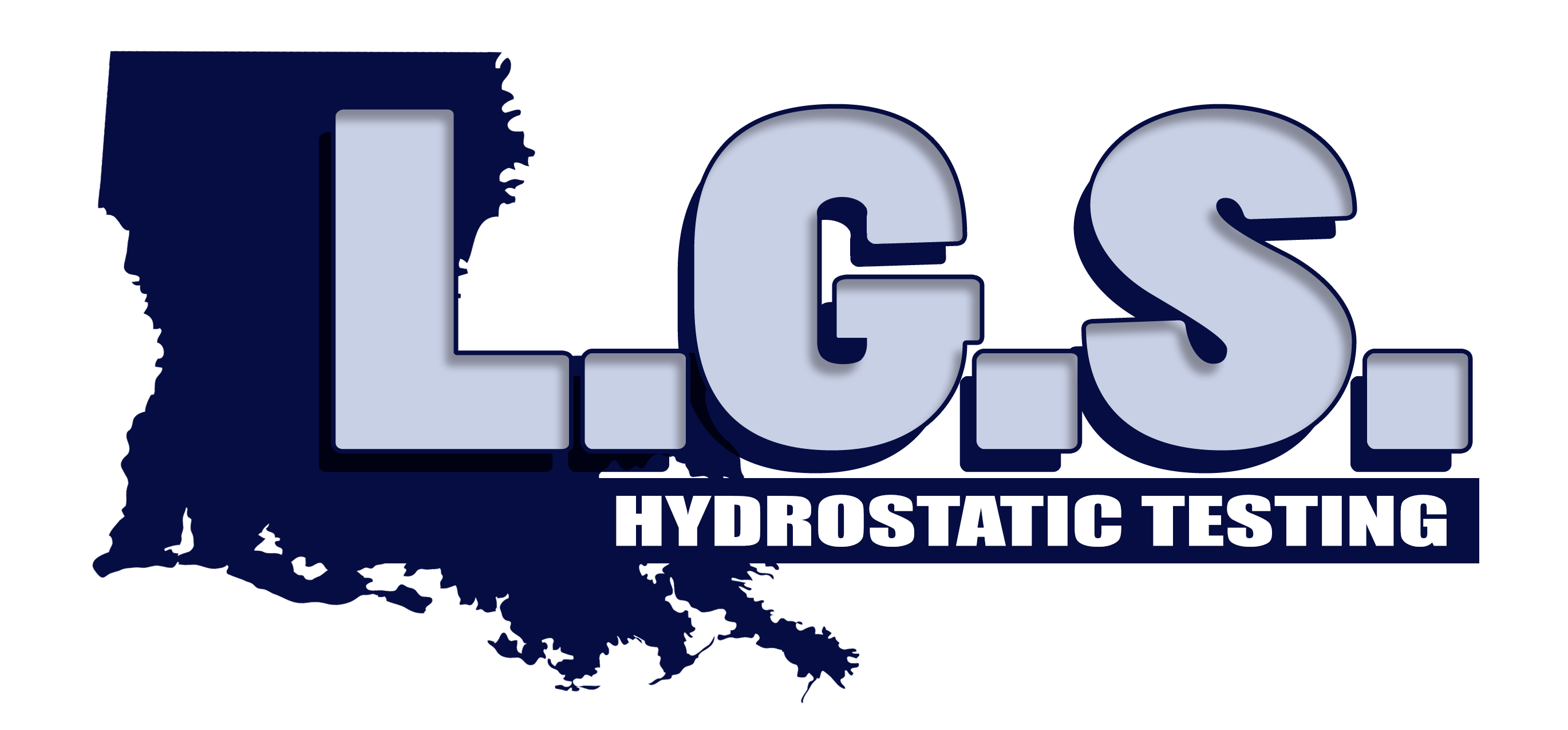Pipeline Testing
High pressure oil and gas pipelines which are already in the ground are tested for strength by pressurizing them to at least 125% of their maximum operating pressure (MAOP) at any point along their length. The steel is stressed to specified minimum yield (SMYS) and above during the testing. Testing for leaks is performed by balancing changes in the measured pressure in the test section against the theoretical pressure changes calculated from changes in the measured temperature of the test section.
L.G.S. Hydrostatic Testing, Inc. offers complete pipeline testing services including:
- Filling and Gauging — LGS floods the pipeline in question with water to test for leaks. Gauging is carried out to prove the dimensional quality of the internal diameter of the pipeline.
- D.O.T. Testing — LGS assists clients with the pipeline in question by pressure testing to a predefined pressure above the operating design pressure of the pipeline.
- Dewatering — LGS helps clients with their excavation dewatering needs. LGS provides the support necessary to dewater and discharge within the client’s permit limitations. From oily water to water high in metals or dissolved solids, LGS interfaces with various equipment vendors to provide such remedies as oil/water separation, filtration, ion-exchange and oxidation.
- Pipeline Drying (Air or Nitrogen) — Free water left in pipelines can cause formation of hydrates, which will cause initial efficiency loss and finally the pipeline to plug. Free water also contaminates the product and causes corrosion.Pipeline drying follows upon hydrostatic testing, dewatering and the caliper run. Executing multiple foam pig runs on the pipeline, LGS will start initial drying operations. Injection of super dry air at a dew point of much lower than – 48˚F shall be continued up to the moment that the target dew-point is reached; In case lower dew points have to be achieved PNS can offer nitrogen drying to dew points of – 70˚F.
Hydrostatic Testing
Hydrostatic testing is a way to test pipelines and other pressure vessels for structural integrity and strength. Hydrostatic testing exposes defective materials that have previously been undetected. Hydrostatic testing is the most common method of testing pipelines. It usually entails filling the pipe with an essentially non-compressible liquid (usually water, often dyed) which is pressurized to a specified test pressure. Shutting off the supply valve and observing whether there is pressure loss tests pressure tightness. Hydrostatic testing is used with newly manufactured pieces before installation, then used again at regular intervals in what is often called a proof pressure test or modified hydrostatic test.
- Testing of Platform Piping, Plant Piping, and Pressure Vessels, etc. — LGS is experienced in the testing of plant piping, as well as vessels which are used to hold gas/fluids at high pressures.
- U.S. Coast Guard Testing (i.e. – dock lines, etc.) — LGS is experienced in the yearly testing of the dock lines that re-supply vessels while they are in port.
COMP-U-TEST®
- Complete pipeline testing including: Fill Phase, Pressure-Up Phase, Hold Phase and Dewatering Phase — LGS runs a pipeline through its entire testing phase while charting multiple key data point which are then fed into our COMP-U-TEST® proprietary software to generate a thorough pipe profile.
- Computerized pipeline tight spot profiling —LGS has a hardware- & Software-driven profiling scheme for identifying pipeline tight spots to profile any areas of potential flow obstruction.
- Locating Stuck Pigs — Pigs may sometimes become stuck or lost for various reasons such as a deformed pipeline, worn out pig, unsuitable or incompatible pig type, excessive build up of debris, pig failure etc. LGS are specialists in locating and removing stuck pigs. We can offer a range of services from advice through to full project management of the rescue operation. Our pigs can be tailored to simply locate the position of the stopped pig, or set to be aggressive enough to recover the stuck pig.
Torquing and Tensioning
L.G.S. Hydrostatic Testing, Inc. now offers hydraulic torquing and tensioning services to our customers. LGS has trained technicians and state of the art equipment for all your bolting needs . We offer hydraulic torque wrenches with ½” to 3-1/2” drives to cover 7/8” through 5-3/4” stud sizes as well as heavy hex size sockets & low clearance link tools. We offer stud tensioning equipment in all sizes and critical flange documentation. We can supply hands on labor & equipment, or technical support to assist your craft in using the equipment. The rental department supplies equipment for contractors or customers requesting such items.
- Hydraulic Torque Wrenches 1/2″ Through 3-1/2″ Stud Sizes 7/8″ Through 5-3/8″ Heavy Hex Sizes Socket & Low Clearance Link
- Bolt Tensioning Services 3/4″ through 4″ stud diameter Fit ANSI and API flanges 50% and 100% tensioning kits Up to 21,750 PSI
- Stub Removal Services Stud extraction (drilling) Drilling of holes for oversized studs Tapping of stud holes
- Nut Splitting Services 1/2″ through 5-3/8″ nut sizes
